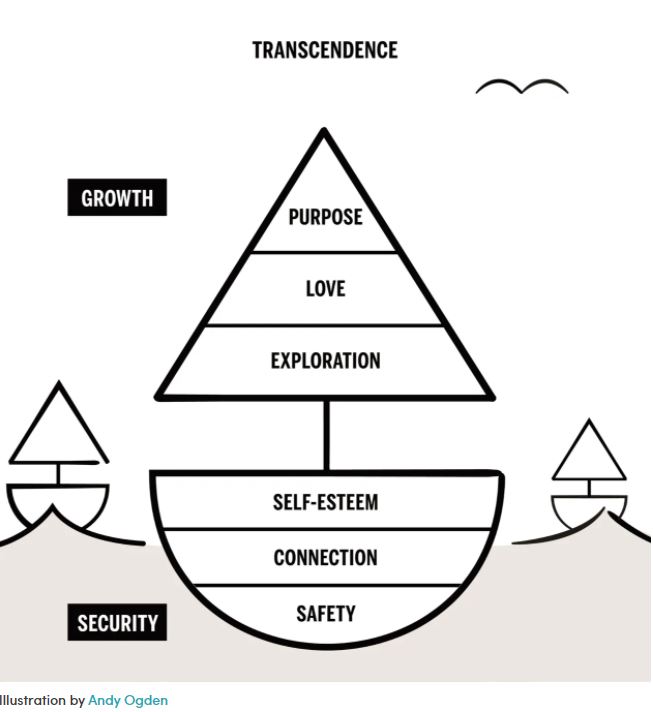Recognising our strengths
In schools, we know the importance of building students’ academic confidence – we provide positive feedback and acknowledge their achievements. The recognition of their emerging mastery is critical – when students feel a sense that they are capable of learning, they are more motivated to continue learning.
This need for recognition is important for adults, too, including school leaders. Data from 1,945 360° feedback surveys completed by Queensland, Department of Education principals for their line supervisors reaffirms that recognition of strengths is both a need and a want. Recognition from supervisors was one of the top ‘do more’ requests along with coaching for development.
In Scott Barry Kaufman’s new book ‘Transcend: The New Science of Self-Actualization’ (2020) he updates Abraham Maslow’s famous hierarchy of needs. Instead of a pyramid of needs he uses a ‘sailboat’ metaphor. The boat in this metaphor represents people’s need for security and belonging. Without the boat itself, we would spend all of our energy just trying to stay afloat in the potentially dangerous water. Having a secure boat – getting a sense of not only safety and connection but also worthiness – is essential. It’s easy to see how recognition, acknowledgement and appreciation from their supervisors could help fulfil the self-esteem and security needs of principals. To improve performance and sail towards better outcomes, particularly in the ‘turbulent waters’ that principals often find themselves in, it is especially important that they first feel secure in the ‘boat’.
Recognition in the coaching process
It is telling that both coaching and recognition topped the ‘want more of’ list of principals’. Taken together, they speak to a need to feel confident that while they will face challenges on the road to improvement, they have strengths that they can draw on to meet these challenges. This belief in one’s professional capacities is often referred to as ‘self-efficacy’, and has been shown to be critical to a leader’s capacity to manage challenges and lead change.
So how can a coaching approach support the development of self-efficacy? In a strengths-based coaching approach, a key part of the process is to draw out and recogonise the tools and skills that a leader already has, and explore how these can be applied to a specific problem or situation. This engenders confidence, reinforcing a sense of mastery and competence, which in turn enables action. Put simply, when leaders are confident that they have the capacity to meet the challenges that come their way, they are much more likely to take action that will lead to success and growth.
Building a culture of coaching
In Queensland, it is clear that both principals and their line supervisors want to focus more on coaching as a pathway for professional growth. The strong alignment between the needs and intentions of principals and their supervisors represents an opportunity to build a culture of strengths-based coaching, where recognition of an individual’s skills and abilities underpins each stage of the coaching process.
This article is based on a discussion paper written by Gary Cox titled Why Principals Want ‘Recognition’ From Their ARDs. To read this paper as well as the first paper in the series of articles titled What Principals Want From Their ARDs, click here.
Gary Cox is the Director and Lead Consultant for At My Best. He is a registered psychologist with over 40 years’ experience in organisational development executive coaching and career development.
